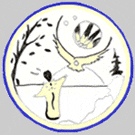| |
Book & Media Reviews
.
Books: Reviews are designed to help alert teachers by Grade to the strengths and weaknesses of particular texts and reference books. They reviews are listed below by title (by both author’s name and title in the site index). For the full citation, see the reviews themselves.
.
Grade 9 Social Studies
Prescribed Texts:
Canada in the Contemporary World (recommended Grade 9 texts for Manitoba Social Studies course Canada in the Contemporary World.)
- Harrison, Patricia et al. Canada in the Contemporary World. Toronto: Pearson Education Canada, Inc, 2007. Review (Strengths and Weaknesses) by R. Shirritt-Beaumont.
- Ruypers, John Ruypers et al, Canada in the Contemporary World (Toronto: Emond Montgomery Pub. Ltd., 2007) Review (Strengths and Weaknesses) by R. Shirritt-Beaumont.
Strengths
Reflective of current educational research, this recommended Grade 9 text approaches the study of history as process rather than event. Consequently, its pedagogical focus is less on recall and comprehension (the knowledge base that was the end goal of traditional history courses) and more on analysis, evaluation, and synthesis as a means of understanding those historical events. It does not stop there. Students are given the opportunity (especially in Unit 4) to apply the knowledge they have acquired to contemporary issues, so that they get practice in the skills needed to be active and responsible citizens.
The layout is excellent. Information is well organised with cross-referencing throughout the text to help the student find relevant information quickly. There is a glossary of important terms as well as an index. Page viii orients students to the strategies that are used throughout the text and thereby models the research process that they will assimilate as they proceed through the course. At the outset of each chapter, students find what it is they need to learn. Key terms are identified for them. The “Skills Toolkit” teaches them how to acquire skills (i.e. “Media Literacy: How to Identify Advertising Techniques,” p. 87, and “How Can I Break This Down?” p. 68). “Face off” gives students opportunities to analyse differing points of view, some of them vital to our future. “Discussion Point” raises questions that can hone their debating skills. At the end of each chapter, “Study Hall” gives them an opportunity to reflect on what they have learned.
The content reflects the multicultural nature of Canada today. Not only are aboriginal and francophone perspectives included, but many others as well. The nature and function of Canadian democracy is addressed, with an emphasis on the rights revolution that occurred during the latter half of the twentieth century. Canada’s role in the global society is the main theme of Unit 3. Content generally reflects current thinking on social issues in Canada today, but what makes its approach so interesting is the emphasis on providing opportunities for students to apply what they have learned to real issues facing Canada today.
Weaknesses
There are red flags, particularly in reference to historical information included in the text. Although its aim is to empower students with skills to make them better citizens, this text doesn’t always do this well. For instance, the Skills Toolkit “How to Identify Bias,” page 111, does not explicitly identify the student’s own bias as he searches to find bias elsewhere, which is a necessary qualification to the statement, “With practice and awareness you can learn to choose sources that give the fair and balanced coverage you need to make informed decisions.” In fact, identifying what is “fair and balanced” is often biased by an investigator’s own point of view. This certainly needs greater emphasis than it receives here.
Those of us with aboriginal roots need to be acutely aware of the dangers of bias, because history teaches us that bias has had an enormous impact on our history. It’s often easy to identify the old stereotypes about aboriginal people, the ones that have been clearly identified and exemplified in historical analysis of the past, but what about the new ones? Below is an example from another section of the text that illustrates this problem.
On page 29, in the section entitled “Assimilation and Residential Schools” we can readily see how the bias of the writer perpetuates the image of the aboriginal as victim. Residential schools are universally condemned as a systematic government policy to eliminate aboriginal cultures and this bias is underscored in the evaluative quip of the writer, “This was ‘progress.’” In point of fact, this piece is a gross oversimplification of residential schools, but it is the popular one, the one that became the basis of a recent government compensation package. By representing aboriginal history in this way, it positions aboriginal people as victims, the weak and pitiful, who must be helped because they cannot help themselves. Unfortunately, the circumstances of aboriginal people of this country have not been improved substantially by this kind of helpfulness.
The above example illustrates just one current bias that serves to filter information, and is an ironic reminder of how careful we need to be in presenting the “facts.” The text’s major strength is that it moves students toward a more analytical approach to the challenges they face as citizens in a democratic country like Canada. However, in terms of its content and point of view, it needs the same critical analysis it recommends for its users. Teachers need to be wary.
Grade 11
Last updated :
September 7, 2011
.
.

This work is licensed under a
Creative Commons Attribution-Noncommercial
-Share Alike 2.5 Canada License. |
![]()









